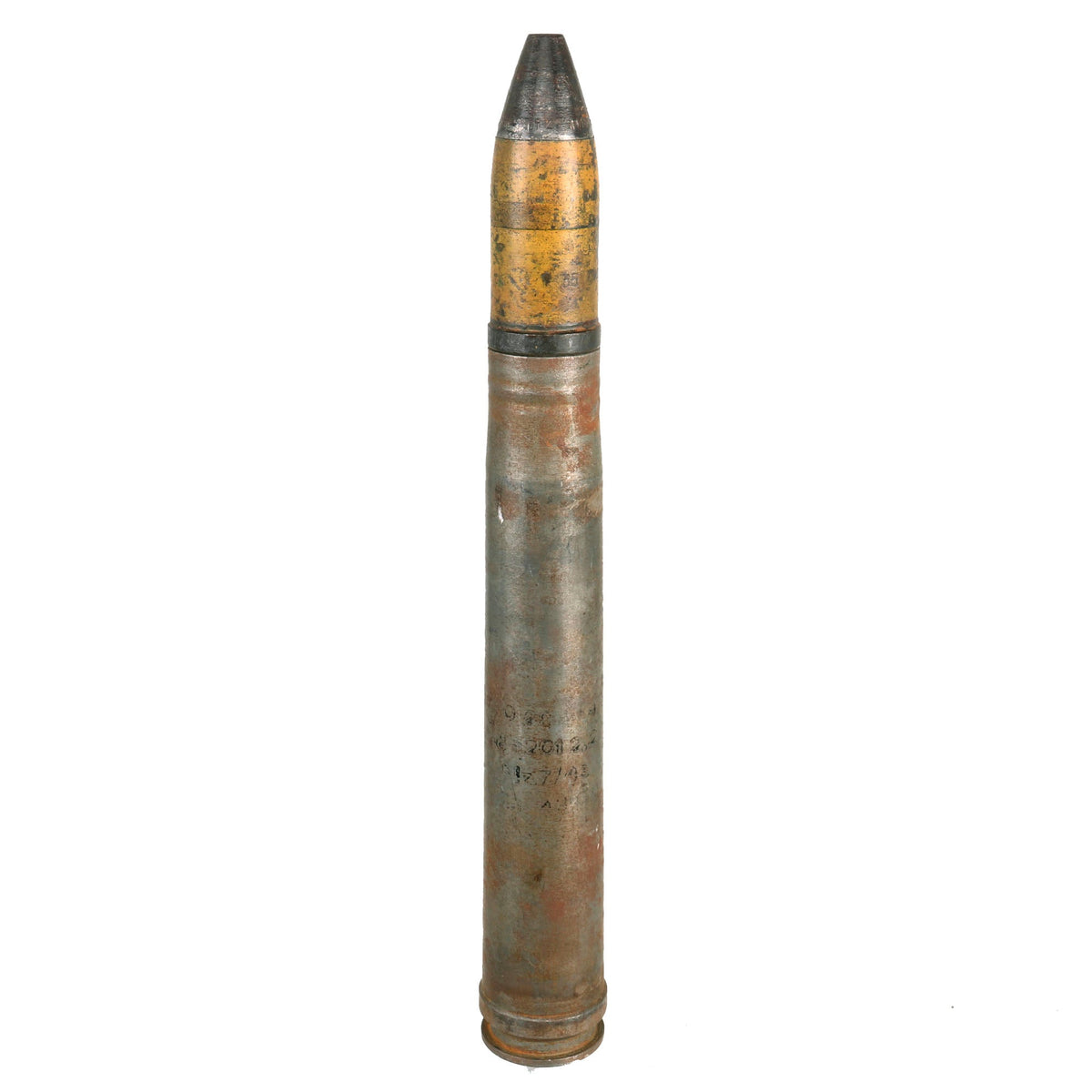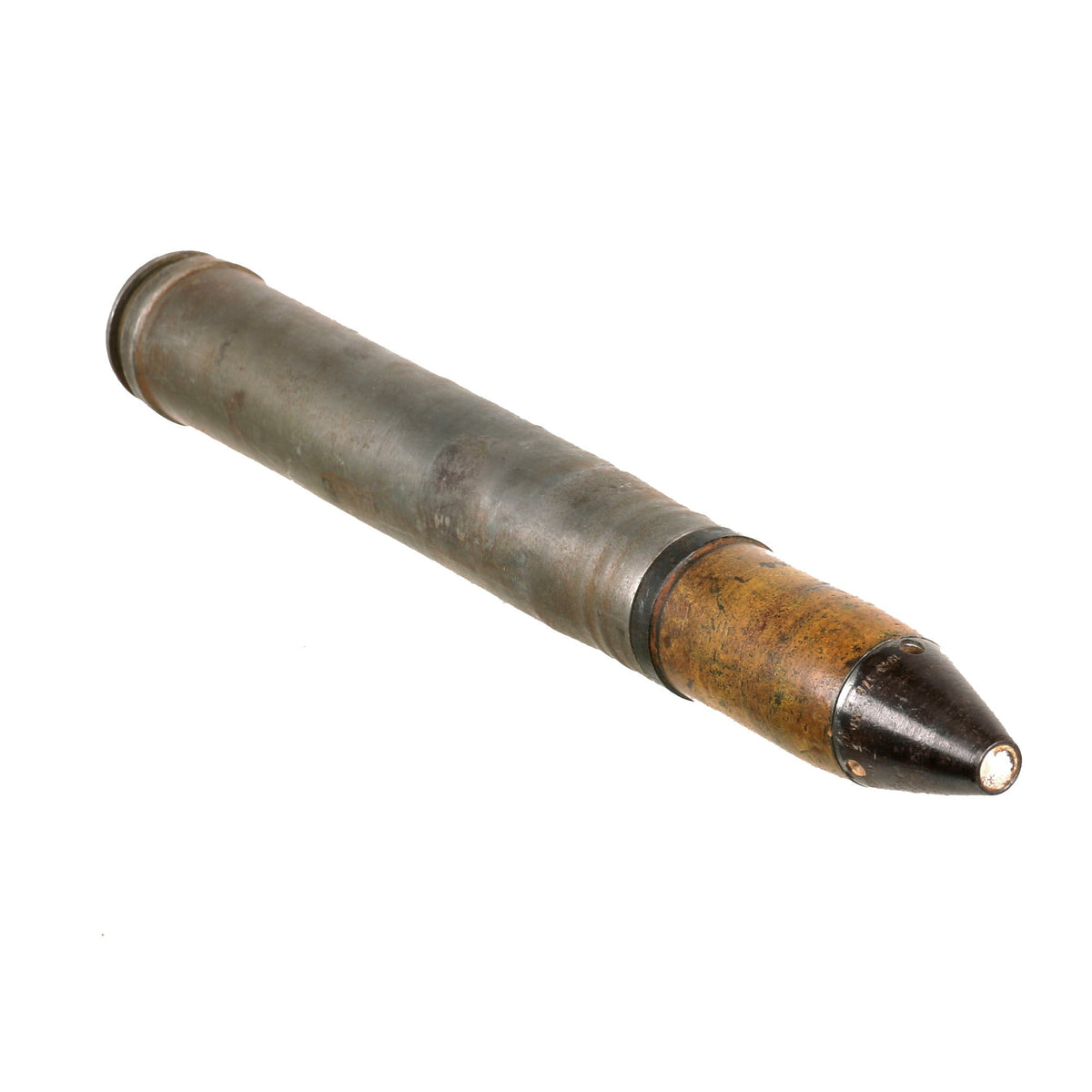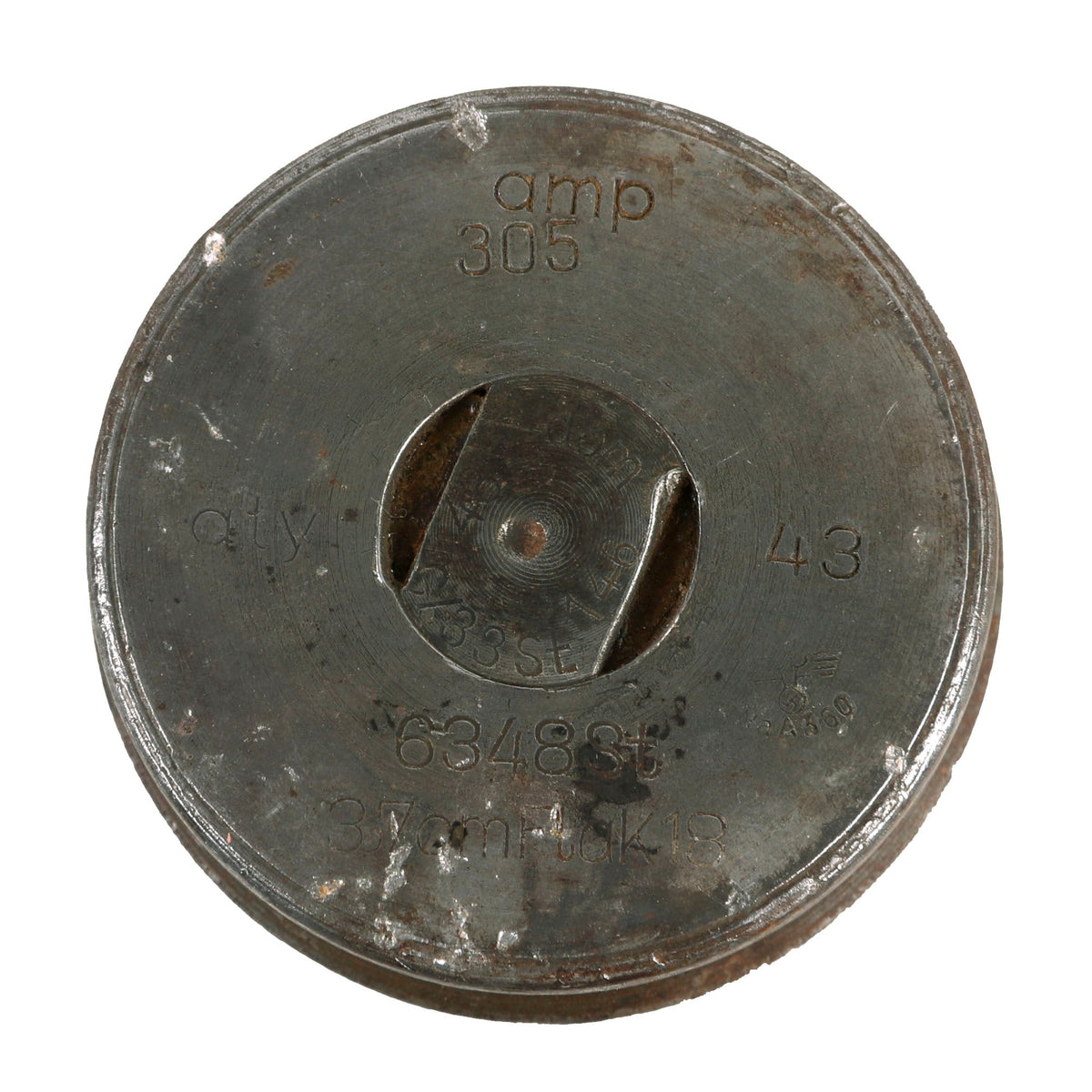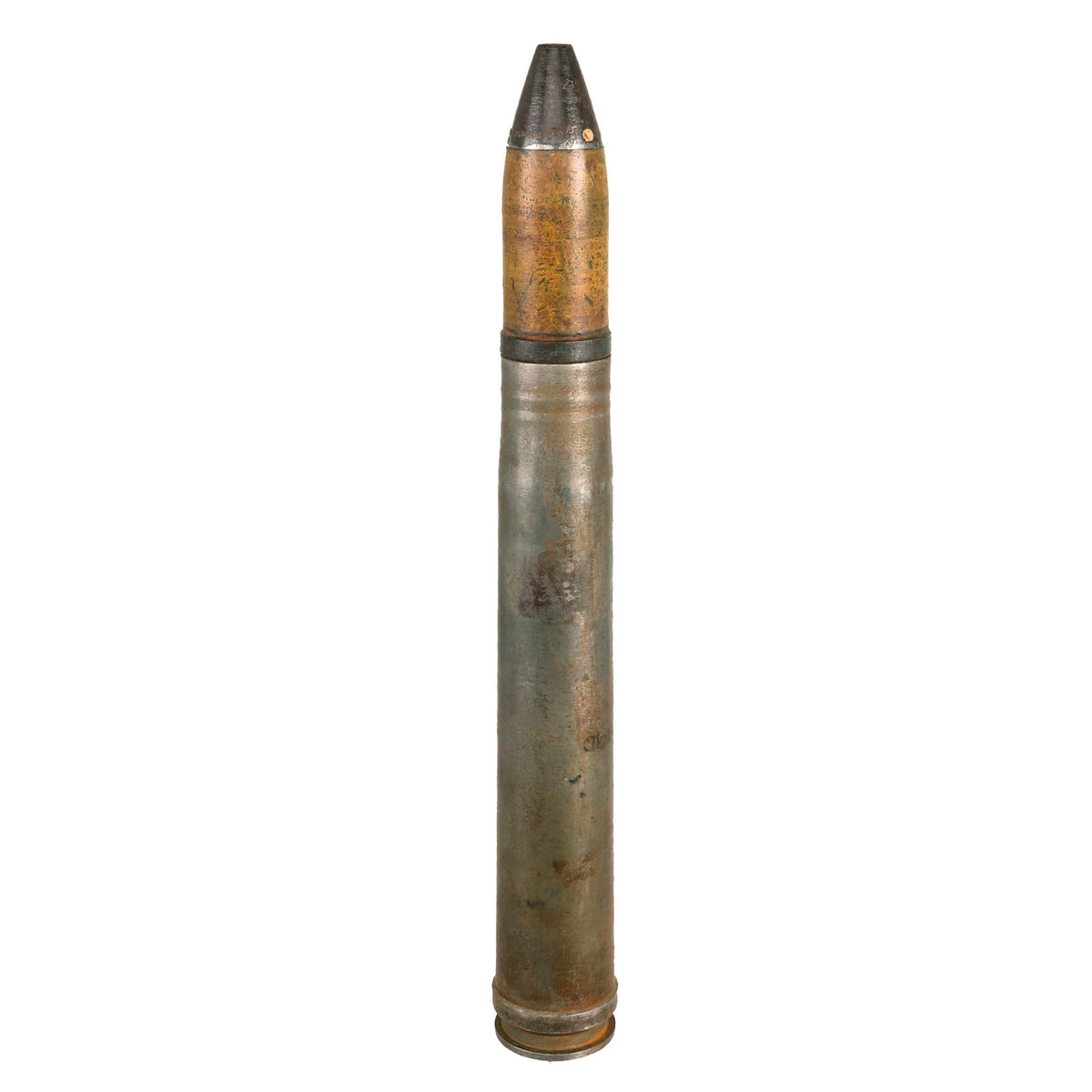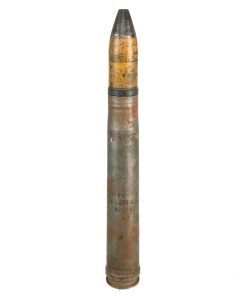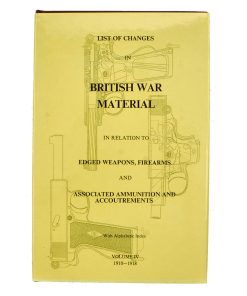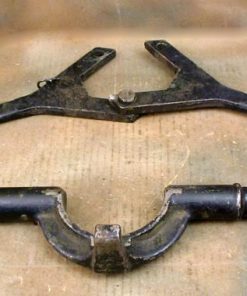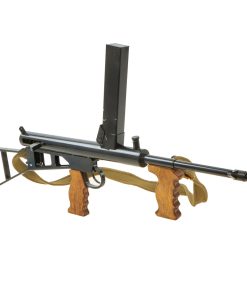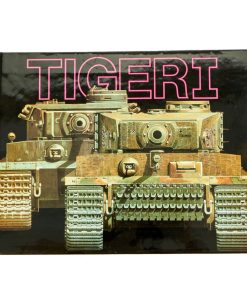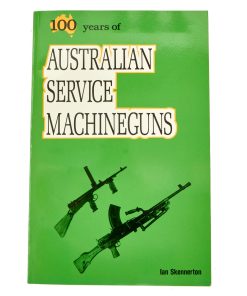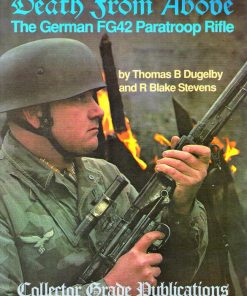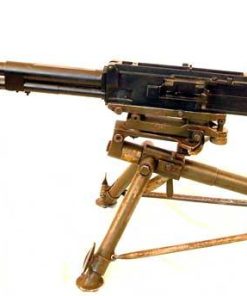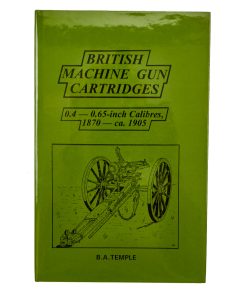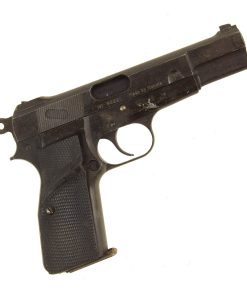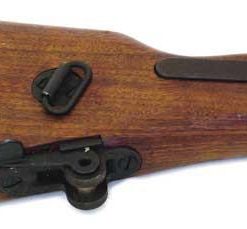Original German WWII Inert 3.7cm Flak 18 High Explosive Anti-Aircraft Round – Dated 1943 and 1944 Original Items
$ 495,00 $ 148,50
Original Item: Only One Available. This is a lovely inert example of a German Flak 18 round, made up of an original projectile with fuze and steel shell casing. This example is completely void of any explosive content nor is it able to be used as an explosive device. The round is in compliance with the current BATF standards on inert ordnance.
Unloaded or dummy grenades, artillery shell casings, and similar devices, which are cut or drilled in an BATF-approved manner so that they cannot be used as ammunition components for destructive devices, are not considered NFA weapons. This example is in total compliance and is NOT AVAILABLE FOR EXPORT.
The 3.7 cm Flak 18/36/37 was a series of anti-aircraft guns produced by NDAP Germany that saw widespread service in the Second World War. The cannon was fully automatic and effective against aircraft flying at altitudes up to 4,200 m. The cannon was produced in both towed and self-propelled versions. Having a flexible doctrine, the Germans used their anti-aircraft pieces in ground support roles as well; 37 mm caliber guns were no exception to that. With Germany’s defeat, production ceased and, overall, 37 mm caliber anti-aircraft cannon fell into gradual disuse, being replaced by the Bofors 40 mm gun and later, by 35-mm anti-aircraft pieces produced in Switzerland.
The overall condition on the round is really very good. The projectile retains much of the original yellow “high explosive” paint and still has markings in the steel, though they are hard to read. We were able to make out cwg 1 44, for January 1944 production by Westfälisch-Anhaltische Sprengstoff AG, Coswig plant, a known producer of explosives during the war. The fuze is correctly marked 3,7cm Kpf.Z.Zerl Pv, and is dated 1943 with a Waffenamt and some other markings, which are hard to read due to oxidation.
The shell casing itself still retains a complete headstamp with Waffenamt WaA360 on the bottom, which reads:
amp
305
qty 43
6348St.
3,7cm Flak 18
This would indicate the shell was manufactured by Dortmund Hoerder Hüttenverein, Dortmund, a known maker of various ammunition components during the war. The other information gives information on the shell, steel supplier, and so forth.
A wonderful example that comes more than ready for further research and display. Measures approximately 14 1/2 inches in length.
Fast Shipping with Professional Packaging
Thanks to our longstanding association with UPS FedEx DHL, and other major international carriers, we are able to provide a range of shipping options. Our warehouse staff is expertly trained and will wrap your products according to our exact and precise specifications. Prior to shipping, your goods will be thoroughly examined and securely secured. We ship to thousands clients each day across multiple countries. This shows how we're dedicated to be the largest retailer on the internet. Warehouses and distribution centres can be located throughout Europe as well as the USA.
Note: Orders with more than one item will be assigned a processing date depending on the item.
Before shipping before shipping, we'll conduct a thorough inspection of the items you have ordered. Today, the majority of orders will be delivered within 48 hours. The delivery time will be between 3-7 days.
Returns
The stock is dynamic and we cannot completely manage it because multiple stakeholders are involved, including our factory and warehouse. So the actual stock may alter at any time. It's possible that you may not receive your order once the order has been made.
Our policy is valid for a period of 30 days. If you don't receive the product within 30 days, we are not able to issue a refund or an exchange.
You can only return an item if it is unused and in the same state as the day you received it. You must have the item in its original packaging.
Related products
Uncategorized
Uncategorized
Uncategorized
Australian WWII Owen MK1 Machine Carbine SMG Custom Fabricated Replica with Sling Original Items
Uncategorized
Uncategorized
Australian WWII Owen MK1 Machine Carbine SMG Custom Fabricated Replica with Sling Original Items
Uncategorized
Uncategorized
Uncategorized
Uncategorized
Uncategorized
Uncategorized
Uncategorized
